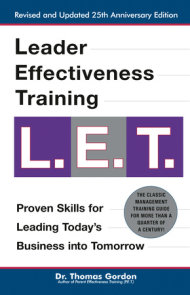


-
$24.00
Aug 01, 1991 | ISBN 9780452266438
Buy the Paperback:
YOU MAY ALSO LIKE

The Thinking Woman’s Guide to a Better Birth

The ADHD Book

A Parent’s Guide to Developmental Delays

12 Effective Ways to Help Your ADD/ADHD Child

The Baby Cheapskate Guide to Bargains

The Complete Book of Children#s Allergies

The Infertility Survival Handbook

Finding Your Perfect Match

The Doctor’s Complete College Girls’ Health Guide
Table Of Contents
Introduction: The Discipline Debate
Part I. Understanding DisciplineChapter 1: Defining Terms and Clarifying Meanings
The Noun and the Verb
Teaching Versus Controlling
Other-Imposed Discipline Versus Self-Discipline
A Disagreement About Limits
Should I Be Strict or Lenient?
The Multiple Meanings of “Authority”
The Myth of “Benevolent Authority”
Chapter 2: The Traditional Reward-and-Punish Approach
Where Do Controllers Get Their Power?
How Rewards Are Supposed to Work
How Punishment Is Supposed to Work
The Conditions for Controlling with Rewards and Punishments
External Versus Internal Control
Chapter 3: Why We Can’t Count on Rewards Working
The Technology of Controlling with Rewards
Difficulties Parents and Teachers Encounter with Rewards
A Deeper Analysis of Praise
Effective Alternatives to Praise
Chapter 4: The Deficiencies and Dangers of Punishment
It Takes Expertise to Make Punishment Work
“Punishment Is Acceptable if It’s Mild”
The Risks of Making Punishment Severe
When the Cat’s Away…
How Punishment Fosters Aggresion and Violence
Adults Inevitably Run Out of Punishments
To the Controller, Power Comes at a Price
Chapter 5: How Children Really React to Control
The Coping Mechanisms Children Use
Retaliatory Violence Against Controllers
When Youngsters “Divorce” Their Parents
Sowing the Seeds of Criminal Behavior
The Failure of Juvenile Courts
Warning: Discipline Is Hazardous to Children’s Health and Well-Being
Getting High and Tuning Out
The Controller’s Loss of Influence
Do We Want Obedient Youngsters?
Part II. Alternatives to Disciplining ChildrenChapter 6: Noncontrolling Methods to Get Children to Change Behavior
Children Don’t Really Misbehave
Who “Owns” The Problem?
Alternative #1: Find Out What the Child Needs
Alternative #2: Let’s Make a Trade
Alternative #3: Modify the Environment
Alternative #4: The Confrontive I-Message
Alternative #5: The Preventative I-Message
Alternative #6: Shifting Gears to Reduce Resistance
Alternative #7: Problem Solving
Alternative #8: When Angry, Find the “Primary Feeling”
How I-Messages Change the Sender
Chapter 7: New Ways of Governing Families and Classrooms
Participative Management
Groups Need Rules
The Six-Step Problem-Solving Process
Conflict-Resolution: The No-Lose Method
Dealing with Values Collisions
Chapter 8: Helping Children Solve Problems Themselves
Helping Children Use the Problem-Solving Process
The Language of Unacceptance
Acceptance: The Basic Helping Attitude
How to Demonstrate Your Acceptance
Chapter 9: Active Listening: The All-Purpose People Skill
Mediating Child-Child Conflicts
Insuring Good Group Discussion
Toward Warner Relationships Between Teacher and Students
Research Supporting Facilitative Skills Training
Other Benefits from Learning the Facilitative Skills
Chapter 10: Why Adults Don’t Give Up Disciplining Children
The Doctrine of “Spoiling” Children
The Belief That Children Are Bad by Nature
Either-Or Thinking about Adult-Child Conflicts
The Biblical Defense of Punitive Discipline
The Permissiveness Myth
Attitudes Against Democratic Leadership
Resistance to Training
Fear of Change in the American Family
Resistance to Change in Schools
Chapter 11. How Democratic Relationships Foster Health and Well-Being
References
Index
21 Books You’ve Been Meaning to Read
Just for joining you’ll get personalized recommendations on your dashboard daily and features only for members.
Find Out More Join Now Sign In









